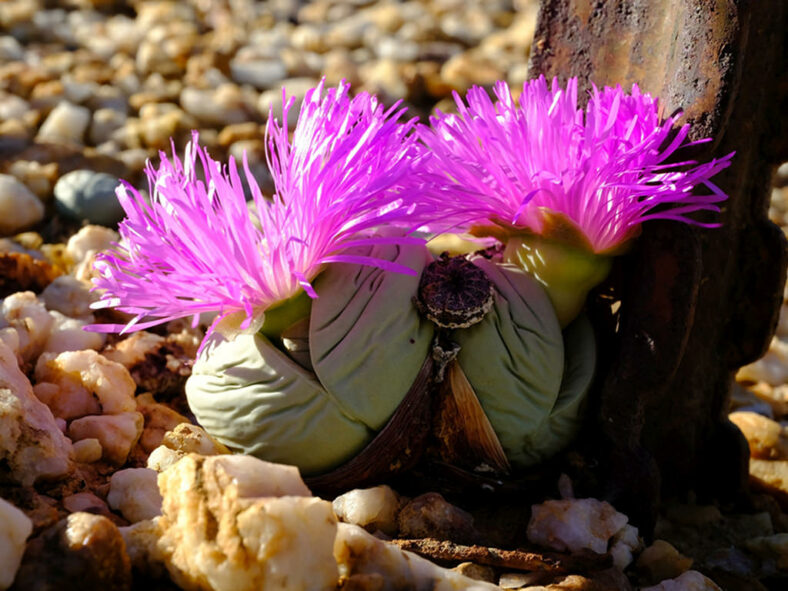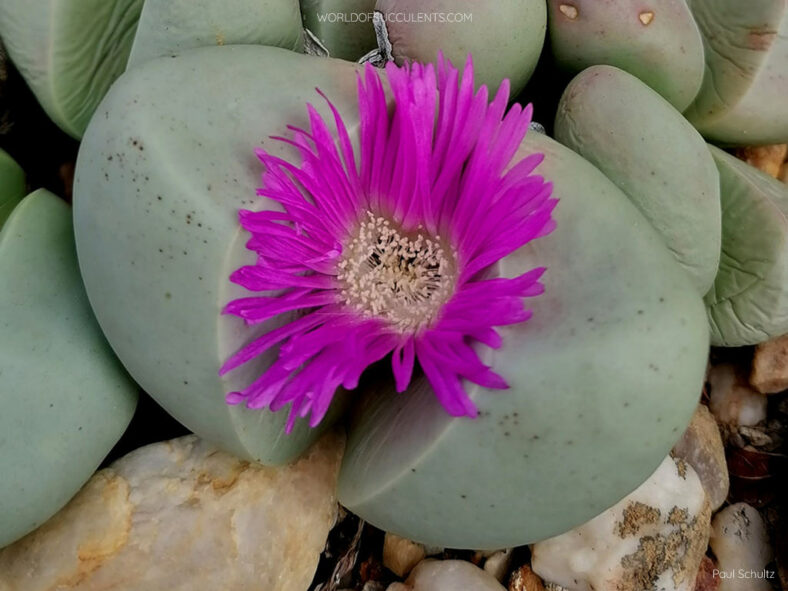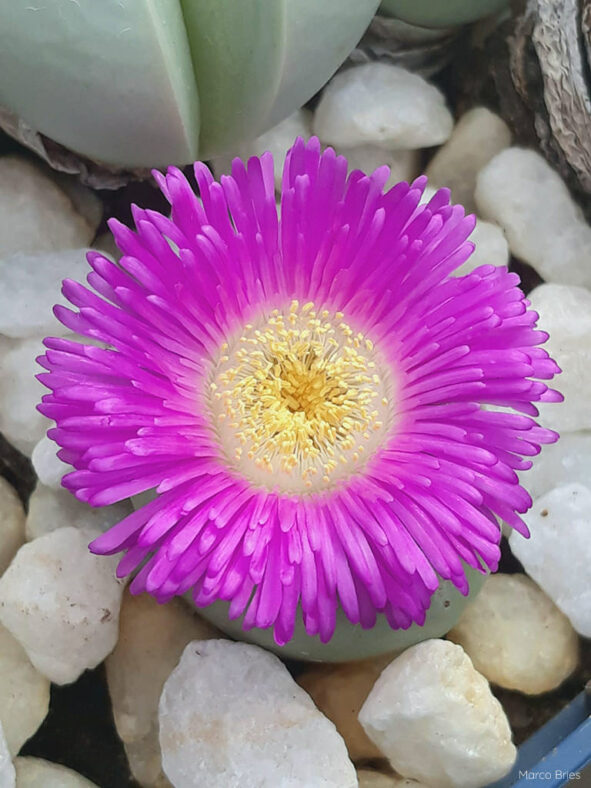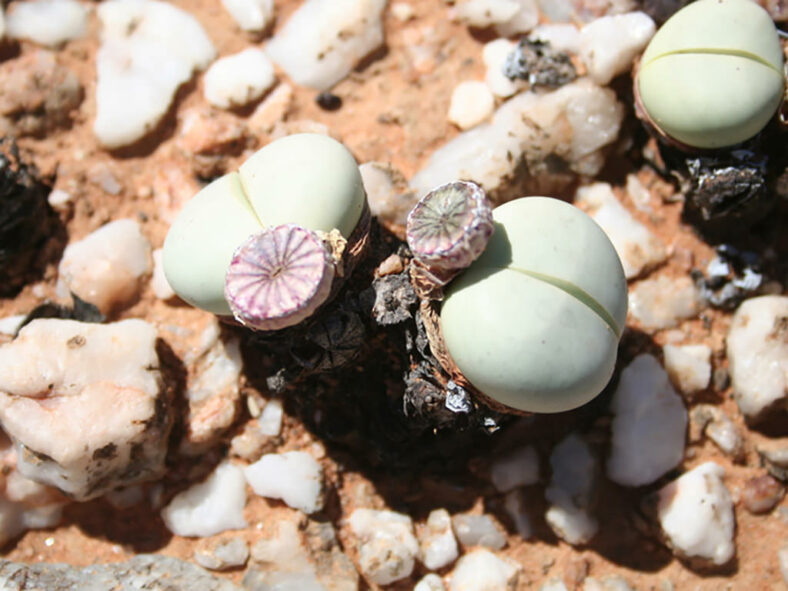Argyroderma pearsonii is a cute little plant first described by Nicholas Edward Brown in 1912 but revised and reclassified by Martin Heinrich Gustav Schwantes in 1929.
Scientific Name
Argyroderma pearsonii (N.E.Br.) Schwantes
Synonym(s)
Argyroderma testiculare var. pearsonii, Mesembryanthemum pearsonii
Scientific Classification
Family: Aizoaceae
Subfamily: Ruschioideae
Tribe: Ruschieae
Genus: Argyroderma
Etymology
The specific epithet "pearsonii (pronounced peer-SON-ee-eye)" honors Henry Harold Welch Pearson (1870-1916), a British-born South African botanist.
Origin
Argyroderma pearsonii is native to South Africa. It occurs around Vredendal and Vanrhynsdorp in the Western Cape and typically grows in quartz patches.
Description
Argyroderma pearsonii is a dwarf succulent with a body that consists of two fleshy, semi-globular, gray-green leaves with a central fissure. It usually grows single-headed but can have up to five branches with age. The body can reach a height of 1.6 inches (4 cm) and a diameter of 1.2 inches (3 cm). Each year, a new pair of leaves appears from the fissure between the leaves. The old leaves turn red-brown and form a tight bowl surrounding the bases of new leaves.
During the fall, Argyroderma pearsonii produces solitary flowers from the fissure between the leaves. The flowers are magenta or pink and have a white or yellow base. They can measure up to 1.4 inches (3.5 cm) in diameter. The fruits are usually 12-locular capsules.

How to Grow and Care for Argyroderma pearsonii
Light: This succulent requires bright light but not too much direct sunlight. So, a windowsill that receives 4 to 5 hours of direct sunlight in the morning and partial shade in the afternoon will be a perfect spot for indoor growing.
Soil: Argyroderma pearsonii thrives in porous soil that allows water to drain away quickly. Therefore, use commercial soil for succulents or make your own well-draining mix.
Temperature: High temperatures are not a problem as long as there is plenty of fresh air, but this plant is not cold-hardy. It grows best in USDA Plant Hardiness Zones 9b to 11b, with average minimum winter temperatures ranging from 25°F to 50°F (-3.9°C to 10°C).
Watering: To keep your plant healthy, it is important to know when, how much, and how often to water it. During its dormant period, which is usually in summer, Argyroderma requires little or no water. Once it grows again in the fall, water thoroughly but allow the soil to dry between waterings.
Fertilizing: As long as you repot this plant every two years, it does not need fertilizer.
Repotting: Even if your plant can stay happy in the same pot for years, you can occasionally repot it to give it more space during the growing season. The best time to do this is at the beginning of the growing season.
Propagation: Although it is usually started from seeds, Argyroderma pearsonii can be easily propagated by division. The best time to divide the plant is late summer, just before it begins to break dormancy, while fall is ideal for sowing the seeds.
Learn more at How to Grow and Care for Mesembs.
Toxicity of Argyroderma pearsonii
Argyroderma pearsonii is considered non-toxic, so having it around kids and pets is safe.
Links
- Back to genus Argyroderma
- Succupedia: Browse succulents by Scientific Name, Common Name, Genus, Family, USDA Hardiness Zone, Origin, or cacti by Genus
Photo Gallery
Click on a photo to see a larger version.


